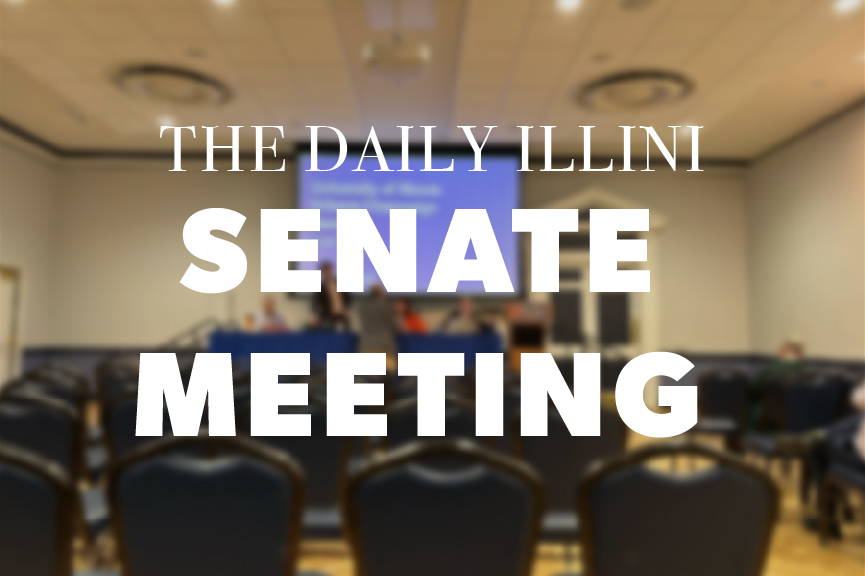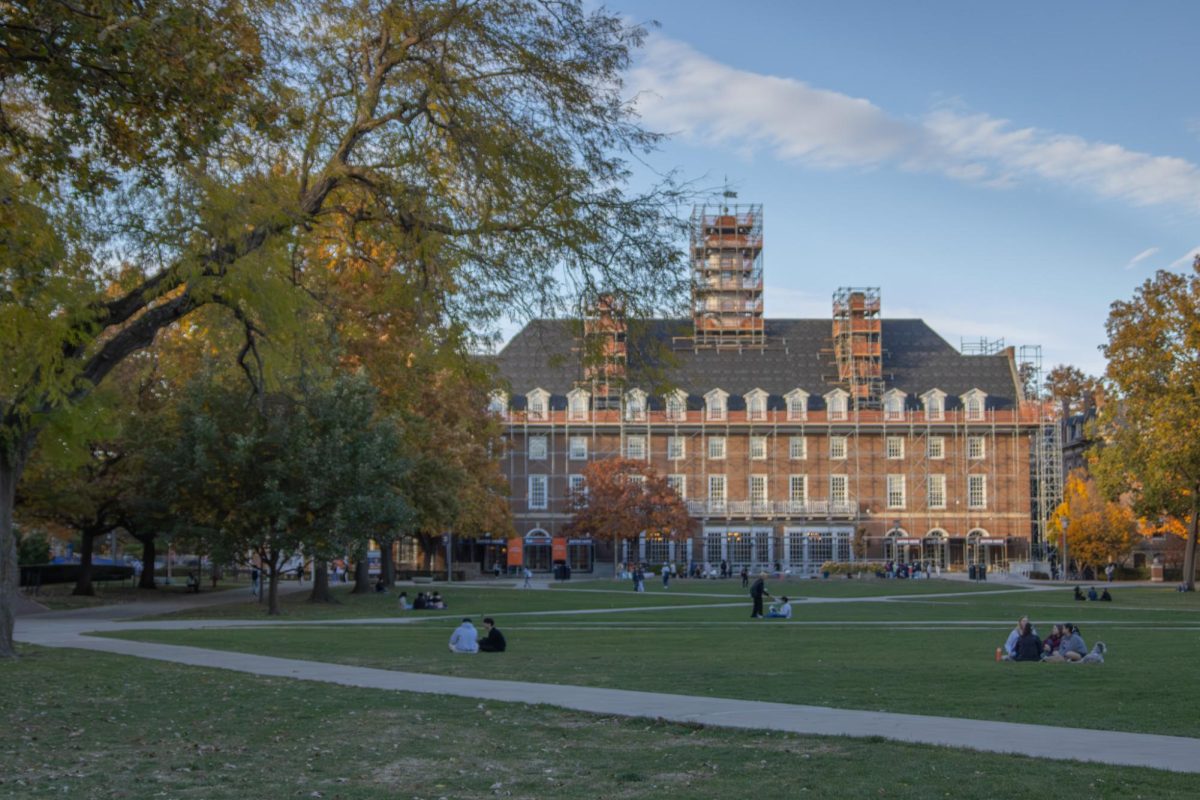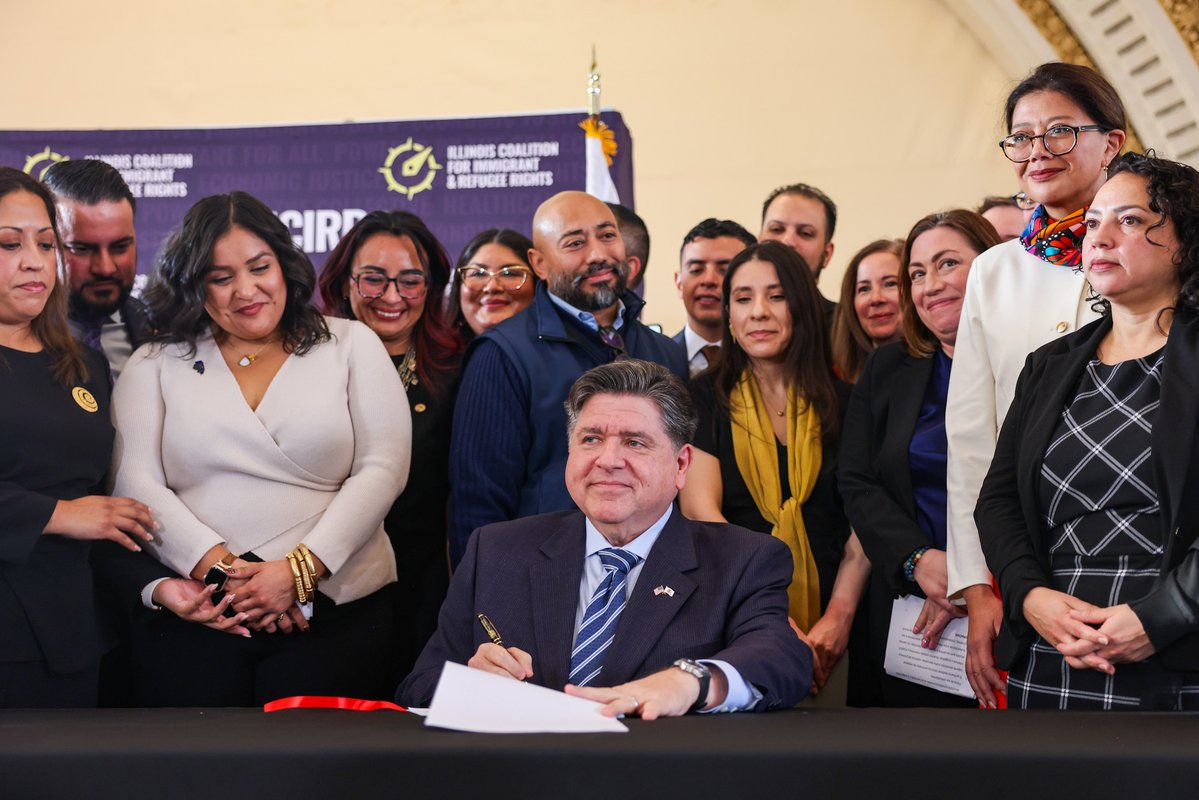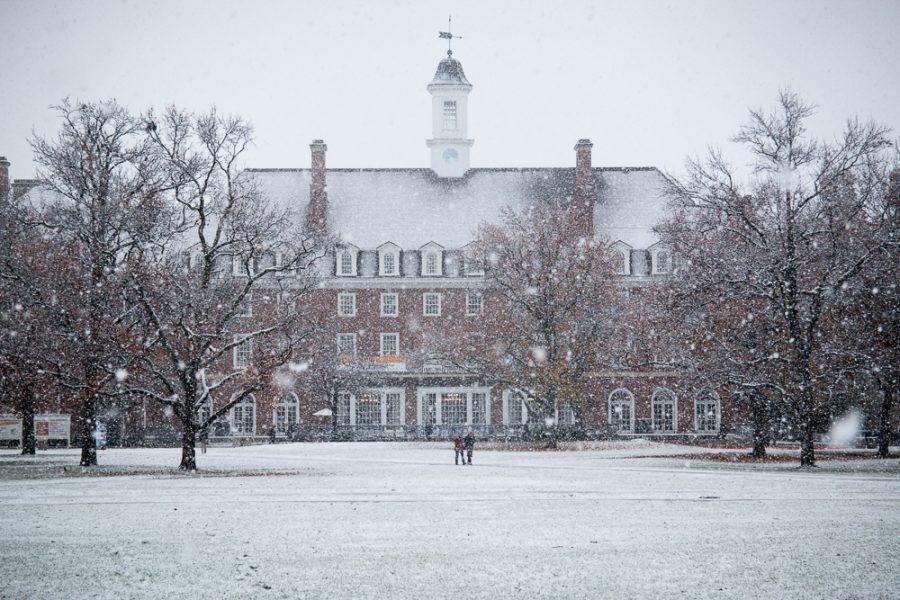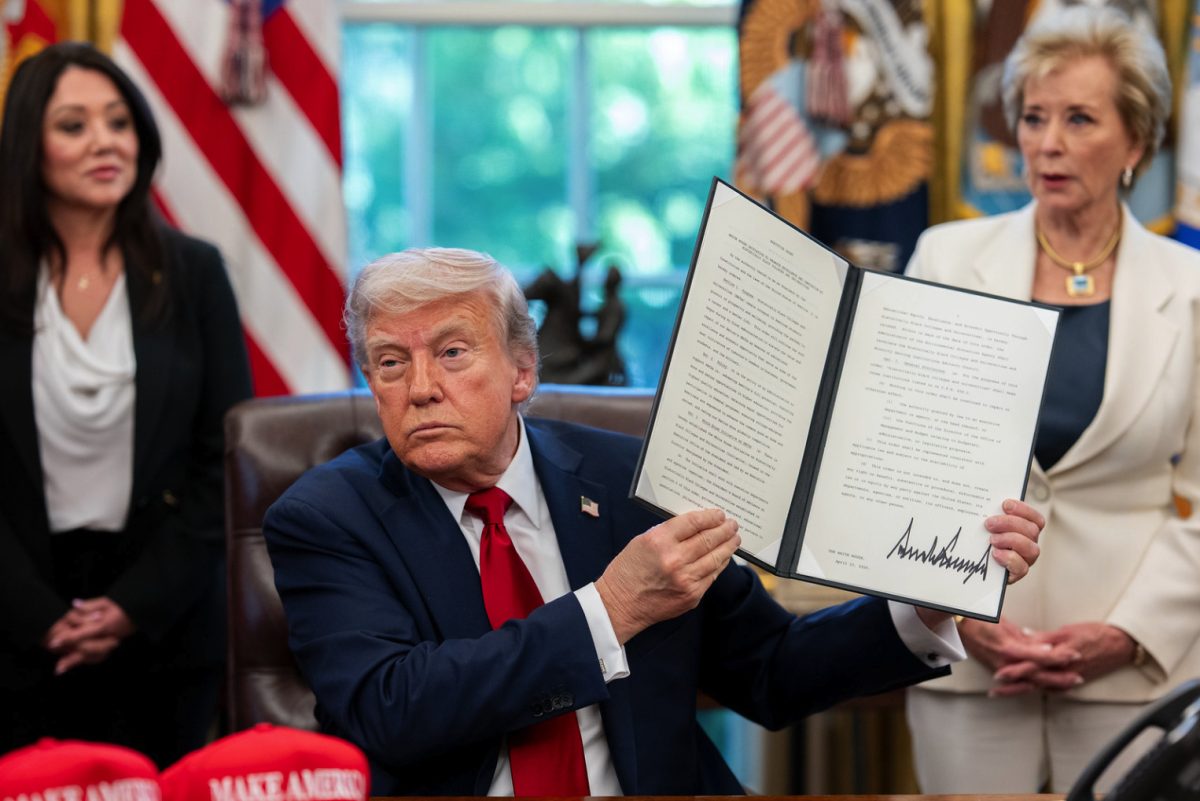In recent weeks, the White House announced a series of tariffs on goods from Canada, China, Mexico and the European Union, among others, fulfilling one of the Trump administration’s key campaign promises.
This push for tariffs comes partially in response to dissatisfaction with the state of the economy pre-November. Separately, in the weeks following the 2024 presidential election, Google reports revealed that user searches for “Who pays tariffs?” spiked significantly.
The Daily Illini spoke to William Ridley, an economist specializing in international trade at the University, to break down the mechanics of trade policy and the effects of back-and-forth tariff implementations.
Here are some of the key terms to understand the discussion on tariffs:
Tariffs
Get The Daily Illini in your inbox!
Tariffs are a tax on imports. In the case of the United States, it is the American companies — not foreign producers — that pay these tariffs when they import goods. In turn, these companies pass the increased costs onto consumers through higher prices.
“I don’t think it helps that ‘tariff’ is kind of this obscure, niche word that not a lot of people are familiar with, but everybody knows the meaning of the word tax,” Ridley said. “Because tariffs are a tax, and voters really hate taxes, no politician runs on a promise of, ‘I’m going to raise all your taxes,’ but certainly, politicians run on promises of ‘I’m going to raise all the tariffs.’”
Ridley emphasized his hope that more people would familiarize themselves with specific policy objectives posed by the administration.
“I wish people would try to understand what this policy is, and that they didn’t buy the line, ‘Oh no, it’s a tax on foreigners,’ which is just nonsense,” Ridley said.
Ridley also said that while Trump’s policies are new, the concept of tariffs is not. He pointed out that Biden, Obama and George W. Bush all imposed tariffs on various U.S. imports during their presidencies. However, there are still differences between how tariffs were used in the past and how they are applied today.
“It’s not new for a president, Democrat or Republican to say, ‘I’m going to put a tariff on imports of x for reason y,’” Ridley said. “I think the key difference is that what we’re seeing right now is so arbitrary. You get these numbers that are just totally plucked out of thin air. Why 50 percent? Why 200 percent? There’s no basis.”
Protectionism
Protectionism is a form of economic policy that limits imports from other countries to shield domestic industry from foreign competition. Protectionist practices include providing subsidies or imposing tariffs or quotas.
“If that’s the goal, and tariffs are a means to achieve it, then maybe the ends justify the means,” Ridley said. “However, economists would likely argue that tariffs are an extremely inefficient way to protect domestic industry, even if they are effective in doing so.”
Depending on economic conditions, the U.S. has historically embraced both free trade and protectionist policies.
Trade deficit
A trade deficit occurs when a country imports more goods than it exports. Deficits can be analyzed at different levels, such as by the specific product, economic sector, trade between individual nations or overall trade balance.
“Trump seems to be deeply worried about trade deficits and sees it as some sort of injustice or grievance to be addressed,” Ridley said. “I think that’s his view of why tariffs are a good thing, and why the trade deficit is something that needs to be addressed. That said, I don’t think a lot of economists agree with that viewpoint.”
In a February memorandum titled “Reciprocal Trade and Tariffs,” the White House announced plans to review U.S. trade agreements. The Trump administration stated it would assess each trade relationship and take action against unfair or non-reciprocal agreements.
“The United States imposes fewer barriers to imports than other major world economies, including those with similar political and economic systems,” the memorandum said. “This lack of reciprocity is one source of our country’s large and persistent annual trade deficit in goods — closed markets abroad reduce United States exports and open markets at home result in significant imports.”
The logic behind imposing tariffs is to encourage consumers to buy American-made products by making foreign goods more expensive. They also have the potential to motivate American industries to innovate and become more self-reliant instead of depending on foreign exports.
“If you’re a big corporation, a small company or anywhere in between, and your business in some way relies on foreign imports or foreign exports — and that’s a large percentage of businesses in the U.S. — you cannot plan or make advanced purchase orders of imported goods,” Ridley said. “This sort of uncertainty and randomness is just, it’s a disaster. There is no upside to it. There is no positive ‘it could be good,’ sort of spin. It’s not a great situation.”
Retaliatory, reciprocal tariffs
Retaliatory tariffs are placed in response to another country’s tariffs on its exports. They are typically used as a countermeasure in trade disputes to pressure the opposing country into modifying its trade policies.
A recent example of retaliatory tariffs is the ongoing trade dispute between the EU and the United States. Trump placed 200% tariffs on wine and champagne from the EU in response to their planned tariff on American whiskey.
“If this tariff is not removed immediately, the U.S. will shortly place a 200% tariff on all WINES, CHAMPAGNES, & ALCOHOLIC PRODUCTS COMING OUT OF FRANCE AND OTHER E.U. REPRESENTED COUNTRIES,” Trump wrote in a social media post. “This will be great for the Wine and Champagne businesses in the U.S.”
Canada, China and Mexico have also announced retaliatory tariffs against the U.S. in recent weeks.
In mid-February, Trump announced his plan to invoke reciprocal tariffs, which are designed to match tariff rates between two countries rather than be purely reactive.
The role of the WTO
The World Trade Organization held a discussion earlier this month at its headquarters in Geneva. Director General Ngozi Okonjo-Iweala said it’s important for members to maintain dialogue with the United States as the economic landscape changes.
“I think we need to listen to the United States and listen to what their concerns are, and say, ‘How can we also help them deal with their concerns,’” Okonjo-Iweala said. “Thirty years ago, when this system was put in place, the U.S. bound its tariffs at a rate that was quite low, maybe around 2.5%, to benefit its population and the outside world. Now the U.S. is saying, ‘This doesn’t work for me anymore.’”
The organization also establishes trade rules for member countries and serves as a dispute resolution system for trade conflicts.
As a member of the WTO, the United States is expected to uphold its commitments, including promoting free-trade principles. Theoretically, if the U.S. fails to follow these commitments, it could face retaliation from other member countries.
“One of the things that the WTO does is settle international trade disputes between countries,” Ridley said. “If the U.S. is mad at China or Canada or whoever, in principle, they’re supposed to go to the WTO to resolve the issue.”
During Trump’s first administration, he criticized the WTO, claiming it unfairly ruled against the U.S. in trade disputes. In response, his administration blocked the appointment of new judges to the WTO’s appellate body, which is essential for resolving trade cases. Without enough judges to issue rulings, the dispute settlement system became inoperable.
The situation continued under the Biden administration, leaving the WTO unable to enforce its rules effectively.
“I don’t think the WTO is really going to play a huge role in this at all, because its dispute settlement mechanism is mostly nonfunctional right now,” Ridley said.
The WTO does not prohibit tariffs entirely but regulates how and when they can be used.
“Lowering trade barriers is an obvious way to encourage trade; these barriers include customs duties (or tariffs) and measures such as import bans or quotas that restrict quantities selectively,” the WTO says on its website.
Trade war
A trade war describes a situation of economic conflict between nations. Oftentimes this involves using tariffs or other trade barriers on the others’ exports in a retaliatory manner.
In recent weeks, economic hostility between the U.S. and China has increased to the point of a trade war. This situation, Ridley said, shows similarities to the trade war Trump launched during his first presidential term.
“Immediately, China responded by putting tariffs on key U.S. exports, like agricultural products, just like you saw in the original trade war,” Ridley said. “It’s a retaliatory spiral where nobody wins at the end of the day.”
This cycle of retaliatory tariffs has added pressure to the agriculture and manufacturing industries, where companies rely on stable trade relationships. Businesses that depend on imported materials may see production costs rise, potentially leading to higher prices for consumers.
“Tariffs are an extremely inefficient way to achieve these objectives,” Ridley said. “Will they protect domestic industry? Maybe, but only in the long run, because a domestic sector to replace foreign imports is not going to spring up overnight, it just can’t. So, long story short, the punchline is that, is this a way to achieve a policy goal? Yes. Is it an effective way? Almost certainly not.”





